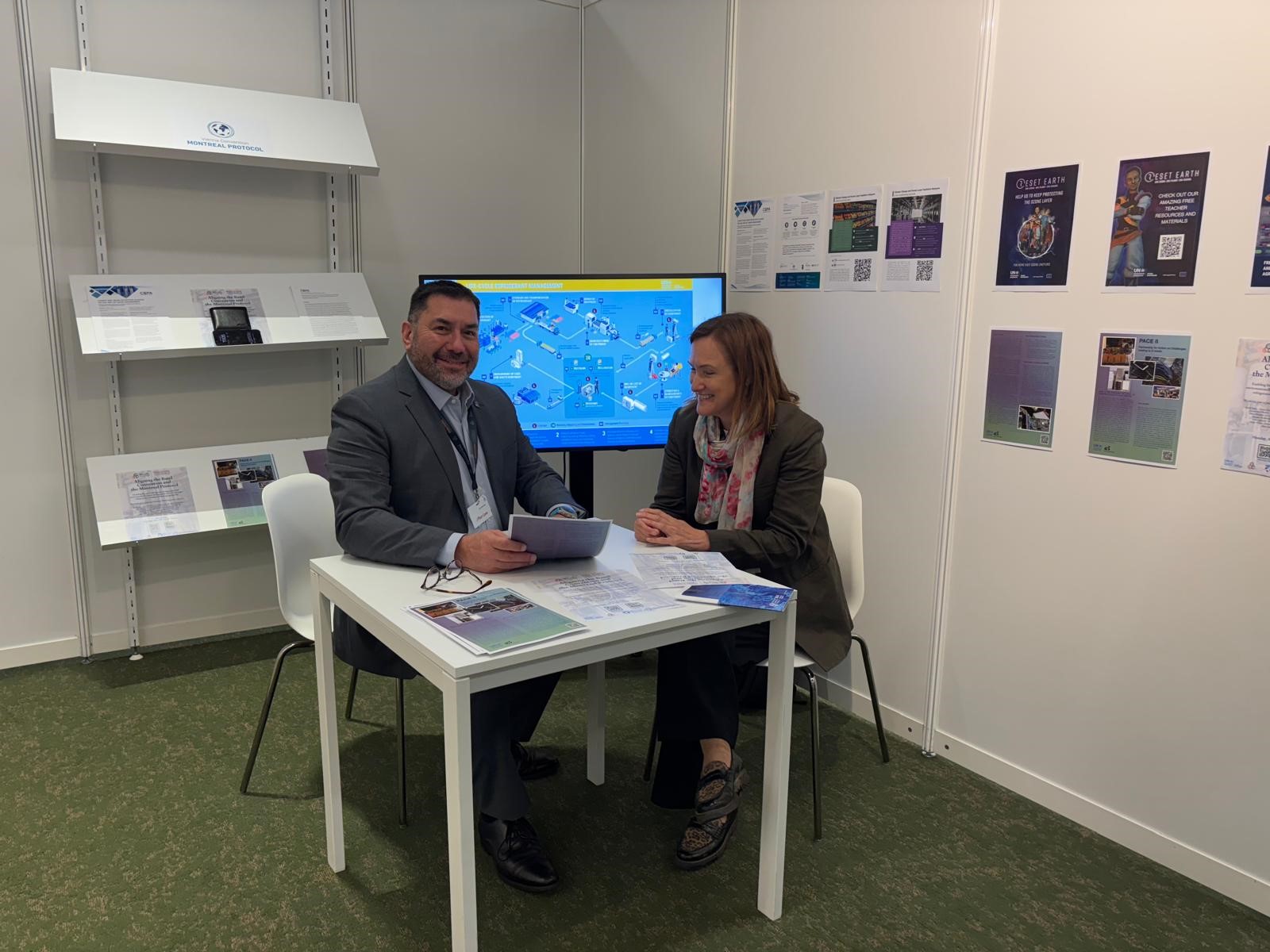Geneva, Switzerland, 29 April – 9 May 2025 – At the 2025 Conference of the Parties to the Basel, Rotterdam, and Stockholm Conventions (BRS COPs), held in Geneva from 28 April to 9 May 2025, the Montreal Protocol was featured in a series of high-impact discussions and exhibits. Through a number of side events and a dedicated booth, the Protocol’s role in tackling issues related to chemicals, waste, and climate change was showcased, highlighting the power of interlinked multilateral environmental agreements (MEAs).
UNEP OzonAction plays a central role in supporting developing countries, referred to as Article 5 Parties in this context, in implementing the Montreal Protocol. Through its Compliance Assistance Programme (CAP), OzonAction helps Parties meet their obligations by providing policy and technical support, capacity-building, and institutional strengthening. CAP assists national ozone units in developing and enforcing legislation, enhancing enforcement mechanisms, and training customs to detect and prevent illegal trade in ozone-depleting substances (ODS) and hydrofluorocarbons (HFC).
In a strong show of collaboration, UNEP OzonAction, together with the Ozone Secretariat, Climate & Clean Air Coalition (CCAC), and the partners, including Carbon Containment Lab, Deutsche Gesellschaft für Internationale Zusammenarbeit (GIZ), Environmental Investigation Agency (EIA), Partnership for Action on Challenges relating to E-waste (PACE II), under the Basel Convention, UN Development Programme (UNDP), and World Customs Organization (WCO) presented a united front at the Basel, Rotterdam and Stockholm Conventions (BRS) COPs, highlighting the importance of inter-agency cooperation in tackling illegal trade and strengthening environmental governance.
Connecting the Dots: Montreal Protocol and the Basel, Rotterdam and Stockholm Conventions
While the Montreal Protocol is not part of the BRS family, these treaties, alongside the Minamata Convention, are commonly referred to as MEAs of the Chemicals and Waste cluster. The Montreal Protocol and the BRS Conventions share common ground on several critical issues, including controlled manufacturing, use, and trade of specific chemicals and waste streams, the environmentally sound management of end-of-life equipment and refrigerants, as well as customs and enforcement matters.
Highlights from the Three Side Events
1. Interlinkages between the BRS Conventions and the Montreal Protocol
📅 1 May 2025 | Co-organizers: Ozone Secretariat, BRS Secretariat, UNEP OzonAction, and WCO
This event launched an exploratory report examining how the BRS conventions and the Montreal Protocol complement each other and what they have in common. Speakers from Belgium, Bosnia and Herzegovina, Ghana, the World Customs Organization, and the Environmental Investigation Agency provided practical insights highlighting policy and practical experience from the perspectives of customs and environmental authorities, responsible for the Basel Convention or Montreal Protocol, and civil society.
Key themes included:
- Examples of interlinkages between the treaties include methyl bromide, carbon tetrachloride, per-and polyfluoroalkyl substances (PFAS) and halons, the environmentally sound management of equipment containing refrigerants and the refrigerants themselves, and illegal traffic and trade of hazardous chemicals and waste under the scope of the Montreal Protocol and the BRS conventions. For example, methyl bromide was classified as a "controlled substance" under the Montreal Protocol in 1992. Methyl bromide was also proposed for listing to the Annex III to the Rotterdam Convention which could provide a valuable opportunity to gather additional information on its international trade and support efforts to identify and enhance control over these unreported uses. Another example would be cooperation between the Stockholm Convention and the Montreal Protocol on sharing scientific knowledge, research findings, and technology transfer related to the management of halons and PFAS. This can support the identification of best practices, alternative substances, and effective regulatory measures for these chemicals.
Recognizing differing phase-out and phase-down schedules ODS and HFC under the Montreal Protocol and their impact on compliance and trade and the e-waste generation and its management. Transition to more energy-efficient alternatives that use low-GWP refrigerants presents opportunities to achieve greater environmental benefits by protecting the ozone layer and mitigating climate change. However, this transition may lead to an increase in the generation of e-waste, ODS banks, and the illegal trade of less energy-efficient equipment, particularly to developing countries. - Destruction of ODS banks in some cases needs to take place in a different country due to the lack of specialized facilities which would ensure the appropriate level of environmental protection. A key issue is linked to determining which regulatory regime applies to the import and export of end-of-life refrigerants. Policy tools like Extended Producer Responsibility are highly relevant, supporting environmentally sound management through the collection, recycling, reclamation, and destruction of refrigerants.
- Illegal trade remains a challenge to be addressed under both the Montreal Protocol and the Basel Convention. Coordinated enforcement efforts are essential, particularly given the border controls and trade control measures within each treaty. While there are similarities in the modes of operation used to detect and prevent illegal trade, the underlying motivations—cost avoidance vs. profit generation—may differ, and financial investigations are often a key component in addressing both.
- Risk profiling, training of customs officers and inspectors, and information-sharing between national and international authorities can significantly enhance enforcement effectiveness. Initiatives such as enforcement Operations Demeter have demonstrated the power of joint action.
- Leveraging the Prior Informed Consent (PIC) procedure to regulate transboundary movement of waste/refrigerants. The PIC procedure under the Basel Convention plays a critical role in regulating the transboundary movement of waste within its scope, including refrigerant-containing equipment. IPIC (Informal Prior Informed Consent) , managed by UNEP OzonAction, is a voluntary mechanism under the Montreal Protocol which also helps preventing illegal trade.

2. Aligning for Lifecycle Refrigerant Management
📅 5 May 2025 | Co-organizers: Ozone Secretariat, BRS Secretariat, and Carbon Containment Lab
The side-event focused on the Montreal Protocol and the Basel Convention to support the lifecycle refrigerant management and environmentally sound management (ESM?) of end-of-life cooling and heating appliances. Highlights included:
- The guidance document on environmentally sound repair and refurbishment of used refrigerators, cooling and heating equipment, and environmentally sound management of their waste, developed under the Partnership on Action on Challenges relating to E-waste (PACE II), is an important contribution to the discussion on e-waste management.
- Global use of HFC, its high global warming potential, and downstream emissions adding up to large volumes of waste gases, mostly destined for the atmosphere, is a recognized concern in the context of the Montreal Protocol.
- Countries lack facilities to destroy HFCs and ODSs, which leads to the transboundary movements of such refrigerants, often under the Basel Convention legal regime, subject to the Parties’ interpretation of their obligations.
- Case studies of ODS and HFC transboundary movements for the purpose of destruction highlight risks of leakages into the atmosphere when delays occur.
- Both the Basel Convention and the Montreal Protocol promote climate and circularity benefits through life-refrigerant management.
- Life cycle management of refrigerants is effective when embedded in national legal frameworks governing waste management. Extended producer responsibility, back-back schemes and certification of disposal operators ensure the ESM of e-waste and refrigerants.
- Monitoring and reporting system throughout the life cycle of refrigerants and e-waste supports the implementation of the Montreal Protocol and the Basel Convention.

3. Agility of MEA Compliance Mechanisms
📅 6 May 2025 | Co-organizers: Basel and Rotterdam Convention Compliance Committees
This side-event showcased the role of compliance mechanisms, including the Montreal Protocol’s Implementation Committee, in the implementation of MEAs. MEA compliance committees often are dynamic tools, evolving with the agreements to address and incorporate new scientific, legal, and technical knowledge, emerging challenges, and the changing needs of the Parties supported by the Committees. The mandates provided to compliance mechanisms continue to be agile, including being adjusted by governing bodies over time to make previously invisible challenges related to implementation visible. Key points included:
- How compliance committees adapt to new legal and scientific developments.
- Examples of cross-agreement collaboration including with the Minamata Convention and the Paris Agreement.
- The Montreal Protocol’s role in supporting Parties through transparency, cooperation, and capacity-building, as well as the importance of data reporting, the establishment of licensing systems, and plans of action to support compliance.
- Analysis of systemic compliance issues based on the previous cases addressed by the Montreal Protocol’s Implementation Committee over the past decade.
Participants highlighted the importance of flexibility and coordination to keep compliance systems effective and relevant in a fast-changing world. The evolution in mandates has strengthened the role of the committees in addressing new developments, including initiating cooperation with other newly established mechanisms as appropriate.

Montreal Protocol Booth: A Hub of Engagement
Throughout the COPs, the Montreal Protocol booth served as an information and networking hub. The booth reinforced the message that ozone action is deeply interconnected with broader environmental goals and that partnerships are key to accelerating progress.
Moving Forward Together
 The 2025 BRS COPs underscored a powerful truth: multilateral environmental agreements are stronger when they work together. The Montreal Protocol’s growing engagement with the BRS community illustrates how cross-treaty cooperation can lead to smarter enforcement, better compliance, and more effective solutions for people and the planet.
The 2025 BRS COPs underscored a powerful truth: multilateral environmental agreements are stronger when they work together. The Montreal Protocol’s growing engagement with the BRS community illustrates how cross-treaty cooperation can lead to smarter enforcement, better compliance, and more effective solutions for people and the planet.
As climate, ozone, and chemical and waste agendas continue to develop, dialogues like the ones held at the BRS COPs play a vital role in fostering better awareness, partnerships, and innovations that will shape the future of environmental protection.
For more information:
Tatiana Terekhova
Capacity Building Manager, UNEP OzonAction
Email: tatiana.terekhova@un.org






